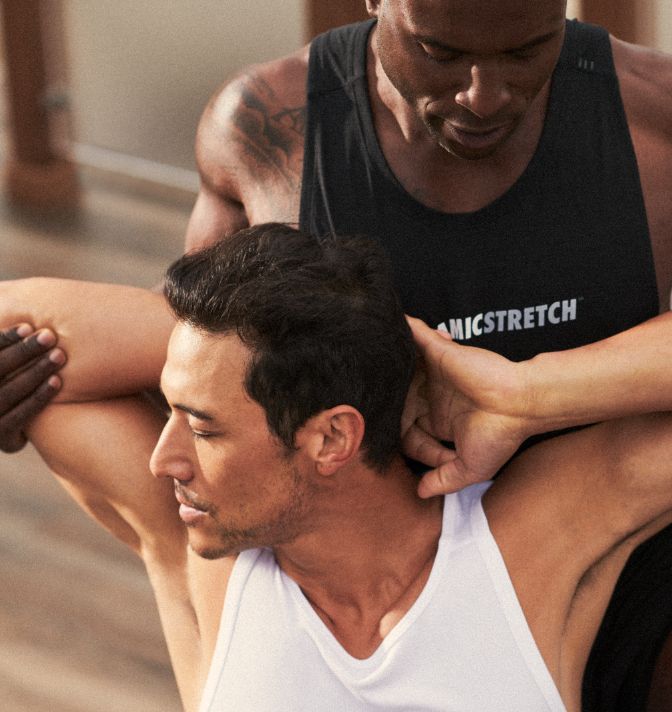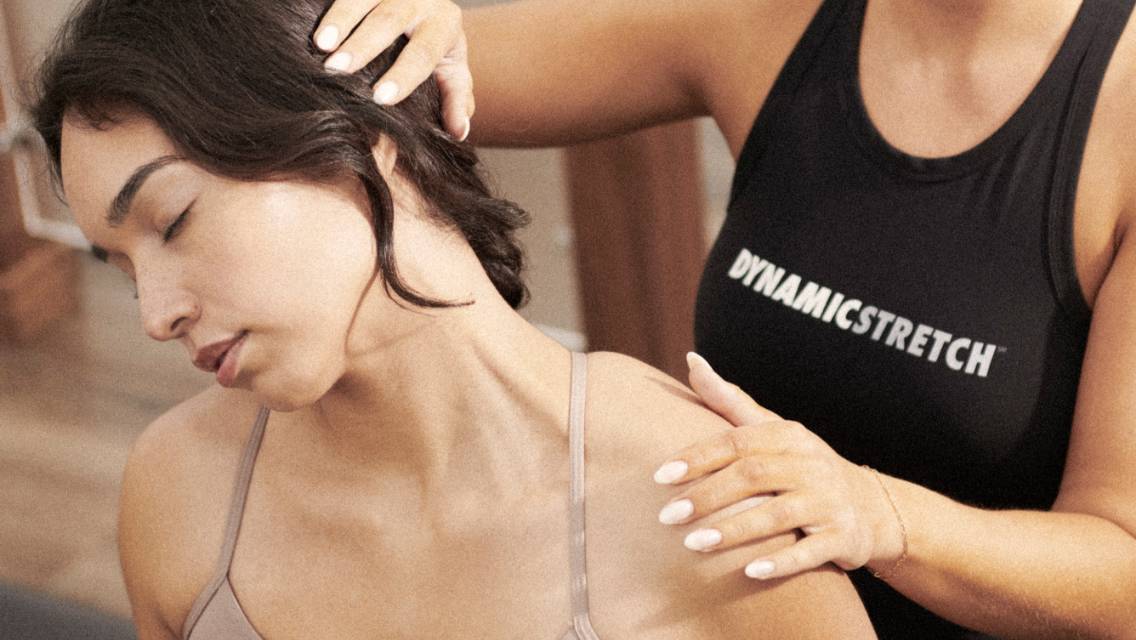The benefits of stretching for recovery and mobility certainly aren’t limited to a specific season, but if you live in a colder climate, it can become even more important during the winter months.
“When temperatures drop, blood flow naturally decreases to the muscles, which can make them feel stiffer and less elastic,” says Mathew Rosas, Dynamic Stretch specialist and Dynamic Personal Trainer at Life Time Middletown – Red Bank in Red Bank, N.J. “Cold air can also cause us to shiver and hunch forward, which creates tension in the chest, shoulders, and neck. We also tend to be sitting more. And the mental impact of winter stress and shorter daylight hours can also lead to more muscle guarding and tension. All of this combined makes us feel tighter and more prone to aches or strains.”
To combat cold-weather tightness, Rosas recommends a consistent stretching routine to increase circulation, warm up your muscles, and restore mobility. Below are his top recommended stretches to turn to in the winter season.
“For best results, do these stretches after warming up your body,” he advises. “For example, after a walk, workout, or even a hot shower. That’s when your muscles are more pliable and responsive.”
1. Standing Chest Opener (Doorway Stretch)
“Cold air and shivering often cause the shoulders to round forward, tightening the chest,” says Rosas. “This stretch helps restore upright posture, open breathing pathways, and reduce upper-back and neck strain.”
- Stand in an open doorway with your feet hip width apart. Place your forearms and palms against each side of the door frame with your elbows at shoulder height. Step your right foot slightly forward while you keep your left leg back and straight.
- Gently lean your chest through the doorway and feel the stretch through your pectoral muscles and anterior shoulders.
- Hold for 20 to 30 seconds while breathing deeply.
- Repeat with your left foot forward.
2. Seated Spinal Twist
“In colder months, we tend to sit more and move less, which leads to stiffness in the spine and trunk,” says Rosas. “Twisting warms up spinal muscles, improves circulation, and relieves tension from hunching or sitting for long hours.”
- Sit tall on a chair with both feet flat on the floor.
- Place your right hand on the outside of your left thigh, letting your left arm naturally fall behind your back.
- Inhale to lengthen your spine, and exhale as you gently rotate your torso to the left.
- Hold for 20 to 30 seconds.
- Repeat on the opposite side.
3. Kneeling Hip Flexor Stretch
“Sitting more in the winter plus colder temperatures can tighten the hip flexors and pull the pelvis forward, increasing low-back tension,” says Rosas. “This stretch helps restore hip extension, easing strain on the back, while also stretching your quads.”
- Start in a lunge position with your right foot forward and your left knee on the ground behind you. (Optional: Place a pad under your knee for comfort.) Bend your right knee to around 90 degrees, keeping your chest tall.
- Gently tuck your pelvis under and shift your hips forward.
- Hold for 20 to 30 seconds.
- Repeat on the opposite side.
4. Seated QL Stretch
“Cold weather can cause muscles around the low back and pelvis to tighten, especially the quadratus lumborum (QL), which helps stabilize the spine when walking on icy or uneven ground,” Rosas explains. “Stretching this area improves mobility, reduces stiffness, and supports better posture in daily activities.”
- Sit tall on a chair with both feet flat on the ground. Place your right hand on the seat for support.
- Reach your left arm overhead and gently lean to the right side until you feel a stretch along your left lower back and side.
- Hold 20 for 30 seconds.
- Repeat on the opposite side.
5. Neck and Upper Trap Stretch
“We often instinctively shrug our shoulders and tense our neck muscles in chilly weather,” says Rosas. “This stretch helps release that tension, easing stiffness and improving circulation while also promoting relaxation.”
- Sit or stand with your spine straight and tall.
- Tilt your head to the right, bringing your ear toward your shoulder. For a deeper stretch, place your right hand gently on the side of your head (without pulling hard).
- Hold for 20 to 30 seconds.
- Repeat on the opposite side.
Assisted Stretching for Winter
If you’re feeling the benefits of stretching and want to take it to the next level, Rosas recommends booking a Dynamic Stretch session with a certified stretch specialist.
“Working with a stretch specialist provides personalized guidance to address your unique tightness patterns, posture, and movement goals,” he says. “We use assisted stretching techniques that reach deeper than you can achieve on your own, improving flexibility, circulation, and recovery. It also gives you structure, accountability, and safe progression to help you stay consistent through the season and build long-term mobility habits and overall healthier tissue.” (Learn more: “What Is Dynamic Stretch?”)





